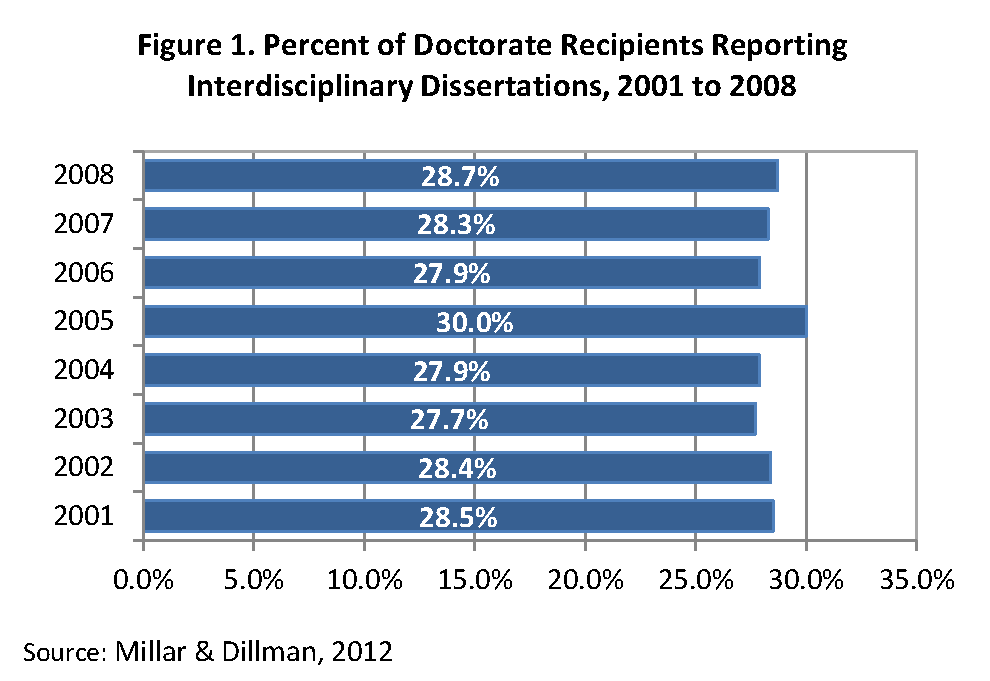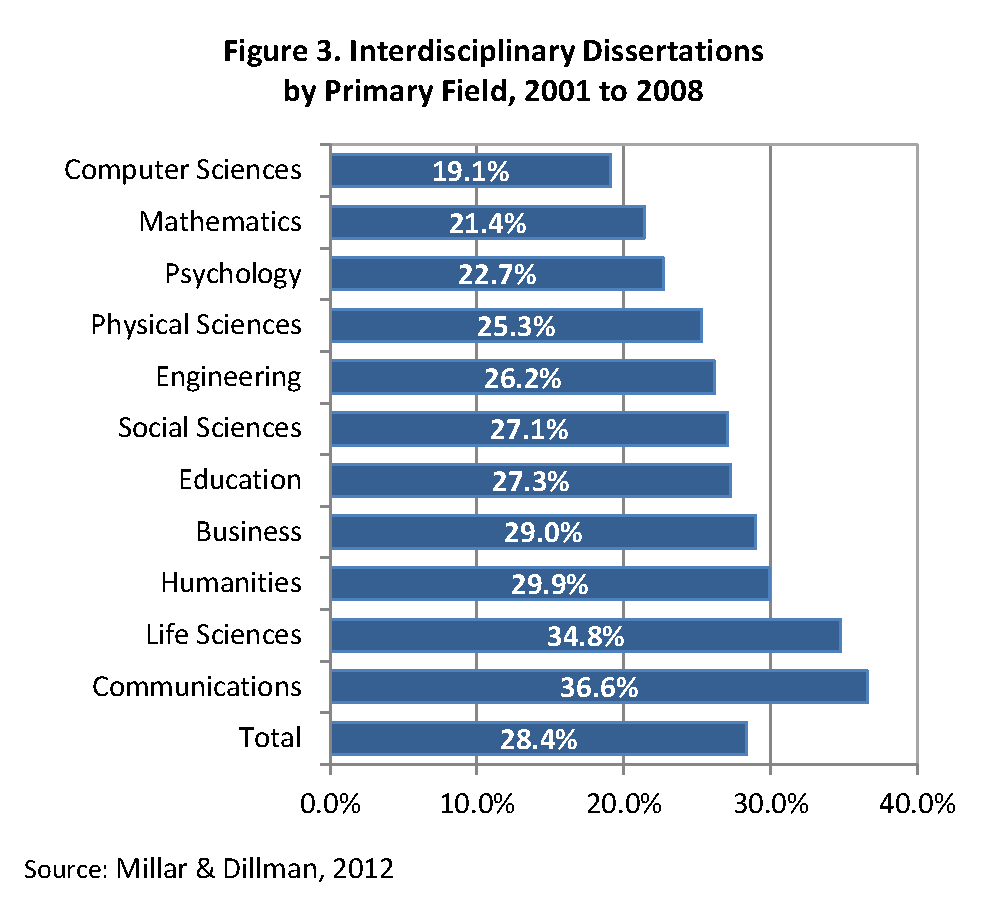You are on CGS' Legacy Site.
Thank you for visiting CGS! You are currently using CGS' legacy site, which is no longer supported. For up-to-date information, including publications purchasing and meeting information, please visit cgsnet.org.
Interdisciplinary study has long been a feature of graduate education and research, but measuring the scope and determining the nature of interdisciplinarity has proven a challenge for survey researchers. Three major data collection efforts on graduate education—the CGS/GRE Survey of Graduate Enrollment and Degrees, the U.S. Department of Education’s Integrated Postsecondary Education Data System (IPEDS), and the National Science Foundation’s Survey of Graduate Students and Postdoctorates in Science and Engineering—use taxonomies of fields of study to collect and analyze enrollment and degree data. While this is an efficient method for characterizing enrollment and degrees in programs of study that are based in a single discipline, it is somewhat less effective for measuring interdisciplinarity.
IPEDS’ Classification of Instructional Programs (CIP) places all multidisciplinary and interdisciplinary programs under a single CIP code. Similarly, the CGS/GRE Survey of Graduate Enrollment and Degrees also groups most interdisciplinary programs together under a single code. The Survey of Graduate Students and Postdoctorates in Science and Engineering reports data on interdisciplinary programs in an “other sciences” category. The classification systems used by these three surveys enable researchers to collect and report data on enrollment and degrees, but they mask some of the diversity that exists among and between interdisciplinary programs. These systems provide a count of the total number of students enrolling in or earning degrees from interdisciplinary programs, but in many cases do not permit an in-depth examination of the fields of study included in the interdisciplinary programs. In addition, these methods of classification provide an undercount of the true extent of interdisciplinarity in graduate education, since individual students in programs that are not considered interdisciplinary may in fact be conducting research that is interdisciplinary.
A fourth data source, the Survey of Earned Doctorates, uses a slightly different method than the three previously mentioned surveys to measure interdisciplinarity. The survey is administered to all doctoral students as they are about to complete their degrees. Individuals completing the survey are asked to select the primary field of their dissertation research from a provided list of fields of study, of which “interdisciplinary” is not an option. Then, a follow-on question asks doctorate recipients whether their dissertation research was interdisciplinary, and if so, to indicate a secondary field of study. By collecting data directly from students about their research, as opposed to collecting data from institutions about their programs, the Survey of Earned Doctorates is able to provide a different picture of interdisciplinarity at the doctoral level.
Using data from the Survey of Earned Doctorates, a recent report from the National Science Foundation examined trends in interdisciplinary dissertation research among individuals earning research doctorates between 2001 and 2008 (Millar & Dillman, 2012). The researchers found that 28.4% of all doctorate recipients in this time period reported that their dissertations were interdisciplinary in nature. The percentage of doctorate recipients reporting interdisciplinary dissertations remained relatively consistent over this eight-year period, as shown in Figure 1.

Doctorate recipients who reported their primary dissertation field as life sciences accounted for the largest share (27.0%) of all interdisciplinary dissertations between 2001 and 2008, as shown in Figure 2. Dissertations in education and engineering accounted for 13.5% and 13.4%, respectively, of all interdisciplinary dissertations. Dissertations in mathematics, computer sciences, and communications accounted for very small shares of all interdisciplinary dissertations and are included in the “other fields” category in Figure 2.

Splicing the data in a different way, Millar and Dillman examined the percent of all dissertations within a primary field that were interdisciplinary. They found that dissertations in communications were most likely to have been interdisciplinary. Between 2001 and 2008, 36.6% of doctorate recipients in communications reported that their dissertations were interdisciplinary in nature. A large share of doctorate recipients in life sciences also reported interdisciplinary dissertations. Doctorate recipients in computer sciences and mathematics were least likely to report interdisciplinary dissertations.

While Millar and Dillman did not examine trends in interdisciplinarity by student demographics, other research has indicated that women participate in interdisciplinary research at higher rates than their male counterparts (Rhoten & Pfirman, 2007). Additional analyses of the data from the Survey of Earned Doctorates could empirically document the extent to which interdisciplinarity differs by gender, citizenship, and race/ethnicity.
Millar and Dillman’s examination of interdisciplinarity provides good insight into the scope of interdisciplinary research in doctoral dissertations. They do suggest in their research—and graduate deans would likely agree—that some differences may exist between how students define interdisciplinarity and how institutions and graduate programs define interdisciplinarity. Despite these potentially differing definitions, it is clear that interdisciplinarity is an established component of graduate education.
By Nathan E. Bell, Director, Research and Policy Analysis, Council of Graduate Schoools
References:
Millar, M. M. & Dillman, D. A. (2012). Trends in interdisciplinary dissertation research: An analysis of the Survey of Earned Doctorates. Retrieved from www.nsf.gov/statistics/ncses12200/
Rhoten, D. & Pfirman, S. (2007). Women in in interdisciplinary science: Exploring preferences and consequences. Research Policy, 36, 56-75.




